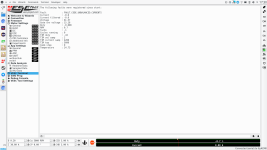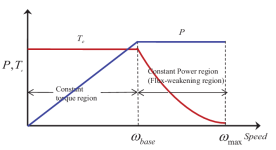bigdaveakers
10 mW
- Joined
- Jan 29, 2019
- Messages
- 31
I now have no faults - needed a HV supply to clear the fault...…….now I need one with some grunt so I can actually do something with it!
Sorry, didn't reply because I saw you already figured it out, but I didn't want to leave the question open. I just checked the fault codes in the code, and they are not coded! I copied the "fault code" silkscreen text from an official vesc board, I guess its in someone's TODO list. Its very simple to code this up here, but my time is better spent in safety critical code and EMI countermeasures.bigdaveakers said:Marcos, are you able to provide details on the fault codes?
I have the fault light flashing when I power up the board and I am keen to debug.
I have connected the throttle and I am able to calibrate it and see the throttle input working in the VESC input wizard.
I haven't been out to my motor to check the resolver yet but I have wired up the gate drivers. I don't have an HVDC supply to connect at the moment so I am just checking out all of the low voltage stuff.

Its actually not a firmware issue, its the hardware. I can assure there is no other vesc out there that can properly work with IGBTs like Axiom does and that's 100% thanks to HighHopes being in the team, I couldn't have figured that out by myself.SRFirefox said:I know in the past the VESC firmware couldn't use IGBTs for switching elements due to the way it did auto-detection of some motor parameters; does this mean that IGBT support is now in the base firmware and could be used by smaller scale derivatives?
marcos said:We should have some cool news next week, and Tec, we found an issue with your motor model, PR with the fix coming soon.
Gerbers are not available ATM, I fear the production of chinese boards with cheaper or poorly assembled components. You know, the people dying with an cheap axiom clone problem. For example I found one place where a solder blob can compromise the isolation between powerstage and control domain.Hackey said:From where i can donwload the gerbers and bom for the AXIOM. I cant wait to put that in my bike. [emoji7]
Its my first smd based project but i will try my best
tecnologic said:Whootok I'm eager to know whats wrong.
marcos said:This term is missing (flux linkage subtraction):
slide_4.jpg
Hackey said:Thats the reason i also order smd stencil and i will use it to apply solder paste on board and arrange all components then use my reflow oven to finish things up.
If you have any suggestions then please tell me as i am beginner



shaman said:Damn you guys are kicking ass! Field weakening has been a long time wanted feature for the VESC platform. Would you be able to tell us some of the downsides to field weakening besides the drop off of torque?
No, you'd have to build it.Marcos do you have a compiled vesc tool with field weakening for linux?
peters said:Correct me if I'm wrong, but if the pwm stops in FW mode and the BEMF becomes so high that the phase-to-phase voltage exceeds the battery voltage then the antiparallel diodes start to conduct at the sine wave peaks at an uncontrollable high current. Isn't it true?
If it is so, then the higher voltage IGBT wouldn't extend the safe FW speed range, because the diodes are in forward conduction. The phase-to-phase voltage is limited to Vbat+2*Vdiode by the battery and the diodes, and anything above that would be cut off at high current. In this case the safe FW operation would always be to limit the max possible phase-to-phase BEMF to the battery voltage (considering the failure mode that the pwm stops working).
